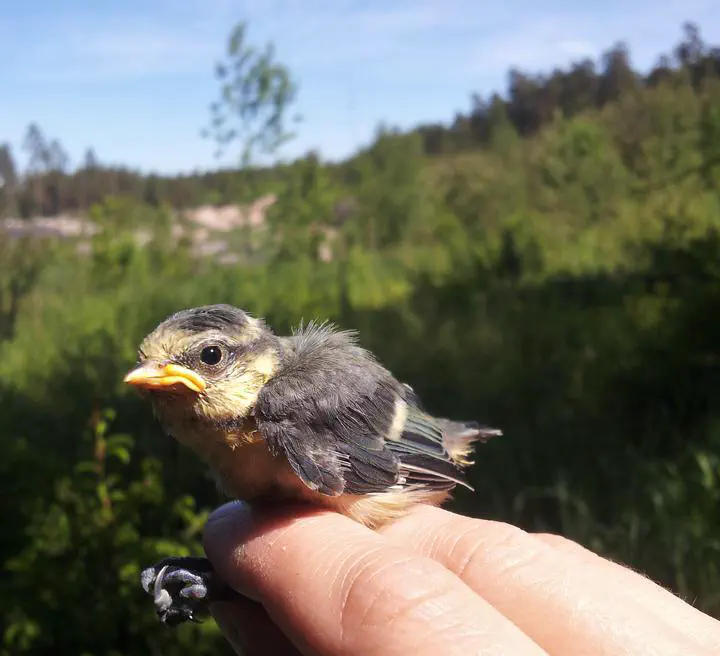Contrasting multilevel relationships between behavior and body mass in blue tit nestlings
 A 16 day old blue tit nestling in poor condition
A 16 day old blue tit nestling in poor conditionAbstract
Repeatable behaviors (i.e., animal personality) are pervasive in the animal kingdom and various mechanisms have been proposed to explain their existence. Genetic and nongenetic mechanisms, which can be equally important, predict correlations between behavior and body mass on different levels (e.g., genetic and environmental) of variation. We investigated multilevel relationships between body mass measured on weeks 1, 2, and 3 and three behavioral responses to handling, measured on week 3, which form a behavioral syndrome in wild blue tit nestlings. Using 7 years of data and quantitative genetic models, we find that all behaviors and body mass on week 3 are heritable (h2 = 0.18-0.23) and genetically correlated, whereas earlier body masses are not heritable. We also find evidence for environmental correlations between body masses and behaviors. Interestingly, these environmental correlations have different signs for early and late body masses. Altogether, these findings indicate genetic integration between body mass and behavior and illustrate the impacts of early environmental factors and environmentally mediated growth trajectory on behaviors expressed later in life. This study, therefore, suggests that the relationship between personality and body mass in developing individuals is due to various underlying mechanisms, which can have opposing effects. Future research on the link between behavior and body mass would benefit from considering these multiple mechanisms simultaneously.